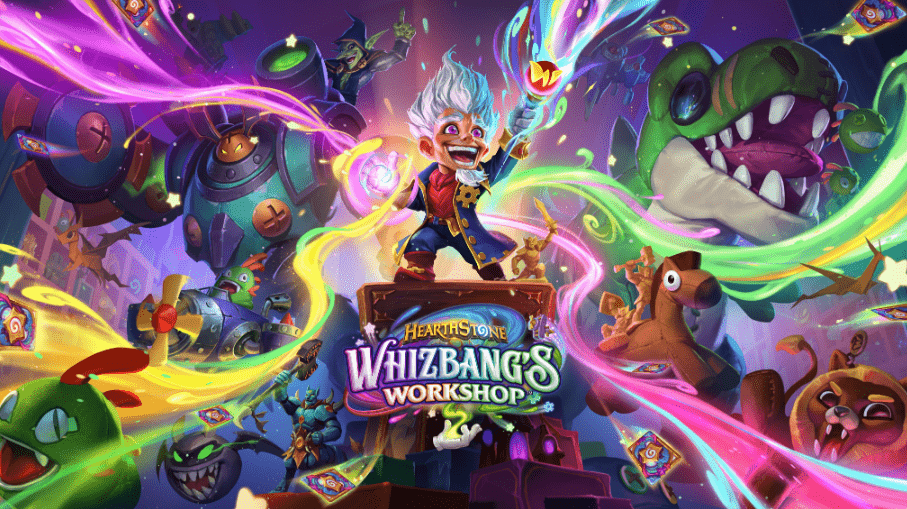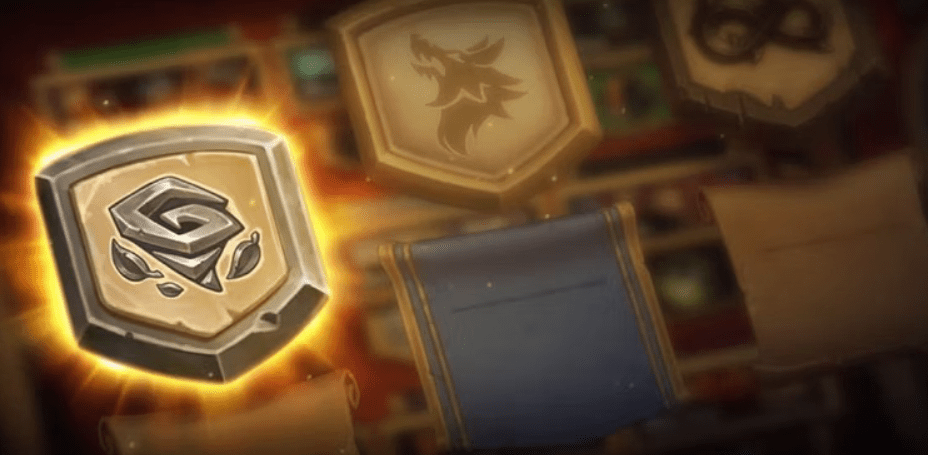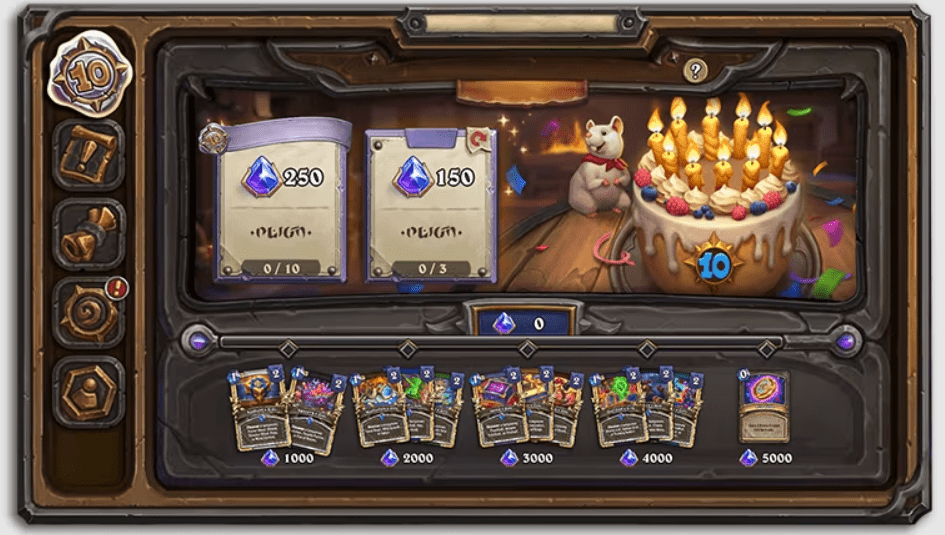Hearthstone 10: A Decade of Digital Card Gaming Revolution and Future Challenges

On March 11, 2014, Blizzard Entertainment made a groundbreaking impact in the realm of collectible card games (CCGs) with the release of Hearthstone, originally subtitled “Heroes of Warcraft.” While the subtitle was dropped in 2016, the game’s fundamental principle remained unchanged: a fast-paced and captivating digital card game that reimagines the beloved Warcraft universe. Serving as a spiritual successor to the discontinued World of Warcraft trading card game, Hearthstone transcended its origins, becoming the epitome of digital CCGs.
A decade later, the digital card game sector is experiencing explosive growth, with numerous games striving to replicate Hearthstone’s innovative success. Although not the first digital CCG, Hearthstone acted as a catalyst for a sustainable trend within the genre. Early digital card games emerged in the late 1990s, adapting popular physical CCGs such as Magic: The Gathering, Pokemon Trading Card Game, and Yu-Gi-Oh! However, it was Hearthstone’s fresh approach, utilizing exclusive digital mechanics and animated elements, that set a new standard in the industry. Among the noteworthy games inspired by Hearthstone’s innovations are Cygames’ Shadowverse, Bethesda’s The Elder Scrolls: Legends, and several others, underscoring Hearthstone’s enduring influence on the genre. Notably, Marvel Snap, created by Hearthstone’s original director, Ben Brode, emerged as a prominent successor, garnering significant revenue and downloads in its debut year, although it didn’t overshadow Hearthstone’s record-breaking performance at launch.
Table of Contents
Hearthstone 10 years
A decade after its initial release, the digital card game sector is undergoing explosive growth, with numerous games striving to replicate the innovative success of Hearthstone. While Hearthstone was not the first digital collectible card game (CCG), it became a catalyst for a sustainable trend within the genre, leaving an indelible mark on the industry. The earliest digital card games emerged in the late 1990s, predominantly as adaptations of popular physical CCGs such as Magic: The Gathering, Pokemon Trading Card Game, and Yu-Gi-Oh! These early forays into digital card gaming laid the groundwork for what was to come, setting the stage for the transformative impact of Hearthstone. What set Hearthstone apart from its predecessors was its fresh and imaginative approach. Blizzard Entertainment, the renowned game developer behind Hearthstone, leveraged the digital medium to introduce exclusive mechanics and animated elements that breathed new life into the genre. The game’s accessibility, strategic depth, and vibrant presentation quickly captured the imagination of players worldwide. Hearthstone’s success was not limited to its engaging gameplay. It also benefited from its association with the iconic Warcraft universe. Initially titled “Heroes of Warcraft,” Hearthstone drew upon the rich lore and characters of the Warcraft franchise, creating a deep sense of familiarity and nostalgia for fans. This synergy between gameplay mechanics and beloved intellectual property proved to be a winning formula, attracting both existing Warcraft enthusiasts and new players alike.
As Hearthstone continued to evolve, it shed its subtitle, embracing its identity as a standalone digital card game. The removal of the subtitle in 2016 was a symbolic step, signifying Hearthstone’s emergence as a distinct brand within the CCG landscape. Its core principle, however, remained steadfast—a fast-paced and captivating digital card game that reimagined the Warcraft universe in a unique and compelling way. The impact of Hearthstone on the digital card game genre cannot be overstated. It introduced a level of accessibility and polish that resonated with a broad audience, transcending the boundaries of traditional CCGs. Its success served as an inspiration for game developers worldwide, spurring a wave of innovation and creativity in the genre. Among the notable games that drew inspiration from Hearthstone’s innovations is Shadowverse, developed by Cygames. Shadowverse built upon the foundations laid by Hearthstone, offering its own unique mechanics and a distinct anime-inspired aesthetic. The game found a dedicated following, particularly in the Asian market, and showcased the enduring influence of Hearthstone on the genre. Bethesda also entered the digital card game arena with The Elder Scrolls: Legends, drawing upon the vast lore of the beloved Elder Scrolls franchise. The game incorporated strategic depth and narrative elements, presenting players with a rich and immersive experience reminiscent of the critically acclaimed RPG series. While The Elder Scrolls: Legends faced some ups and downs throughout its lifespan, it underlined the lasting impact of Hearthstone and its ability to inspire new entries in the genre.
Marvel Snap, created by Ben Brode, the former director of Hearthstone, emerged as another notable successor. The game capitalized on the popularity of the Marvel Comics brand, blending card-based gameplay with Marvel’s iconic superheroes and villains. While Marvel Snap enjoyed significant success in terms of revenue and downloads during its debut year, it did not overshadow Hearthstone’s record-breaking performance at its inception. Hearthstone’s enduring influence on the digital card game genre is a testament to its ability to captivate players and redefine industry standards. Its innovative approach to digital mechanics, combined with its immersive presentation and connection to beloved intellectual properties, set a new benchmark for the genre as a whole. Looking ahead, the digital card game sector continues to thrive, with new titles constantly pushing the boundaries of what is possible. Whether it’s refining existing gameplay mechanics, exploring new themes and settings, or experimenting with novel approaches to digital card gaming, developers are building upon the foundation laid by Hearthstone, seeking to capture the attention and enthusiasm of players worldwide. Hearthstone revolutionized the digital card game landscape, becoming a trailblazer that inspired a new generation of games in the genre. Its impact can be felt in the explosive growth of the sector and the ongoing drive for innovation and excellence. As players and developers continue to explore the vast possibilities of digital card gaming, Hearthstone’s legacy remains as a shining example of what can be achieved when creativity, accessibility, and a touch of magic come together in the world of gaming.
Hearthstone’s journey is far from over
Despite its monumental initial success, Hearthstone has encountered a series of challenges that have tested its resilience. These challenges include declining revenues and player numbers, a high barrier to entry for competitive play, and the discontinuation of certain game modes. Additionally, the termination of Blizzard’s partnership with NetEase had a significant impact on the accessibility of the game for Chinese players, who constitute a substantial portion of the player base. The scaling back of Hearthstone’s esports initiatives further underscored the difficulties it faced. However, Hearthstone’s journey is far from over, and the game continues to evolve in response to these challenges. With a dedicated and passionate community, Hearthstone has managed to maintain a stable player base and remains a popular choice among digital card game enthusiasts. Blizzard has demonstrated its commitment to the game’s future by outlining plans for upcoming expansions, including the highly anticipated Year of the Unicorn celebration, which promises to introduce fresh content and exciting gameplay experiences. One of the notable additions to Hearthstone is the cooperative mode called Battlegrounds. This mode offers players a unique and collaborative gameplay experience, allowing them to team up with friends or other players to overcome challenges and achieve victory.
By introducing innovative game modes like Battlegrounds, Hearthstone strives to cater to a diverse range of player preferences and provide new ways to engage with the game. The ability of Hearthstone to continuously innovate within the digital card game genre while simultaneously enriching the lore of the Warcraft universe is a testament to its enduring appeal. The game’s developers have consistently introduced new card sets, mechanics, and features to keep the gameplay fresh and exciting. This commitment to innovation has allowed Hearthstone to maintain its relevance and attract both new and returning players. Furthermore, Hearthstone’s vibrant and enchanting aesthetic, coupled with its intuitive gameplay, has contributed to its widespread popularity. The game successfully strikes a balance between accessibility for casual players and strategic depth for competitive gamers. Its intuitive interface and straightforward mechanics make it easy for newcomers to grasp, while the strategic complexity of deck-building and card synergies provides depth and longevity for seasoned players. As Hearthstone commemorates a decade of shaping the digital collectible card game genre, it eagerly looks ahead to the future. The game’s enduring legacy and dedicated player base make it well-positioned to navigate the evolving landscape of digital gaming. Blizzard’s commitment to addressing the challenges and refining the Hearthstone experience ensures that the game will continue to captivate players worldwide.
In conclusion, while Hearthstone has faced its fair share of obstacles, it remains a prominent and beloved digital card game. The game’s ability to adapt, innovate, and engage its community has allowed it to overcome challenges and maintain a strong presence in the industry. As it celebrates its tenth anniversary, Hearthstone eagerly embraces the next decade, poised to enchant players around the globe and solidify its position as a pioneering force in the realm of digital gaming.





